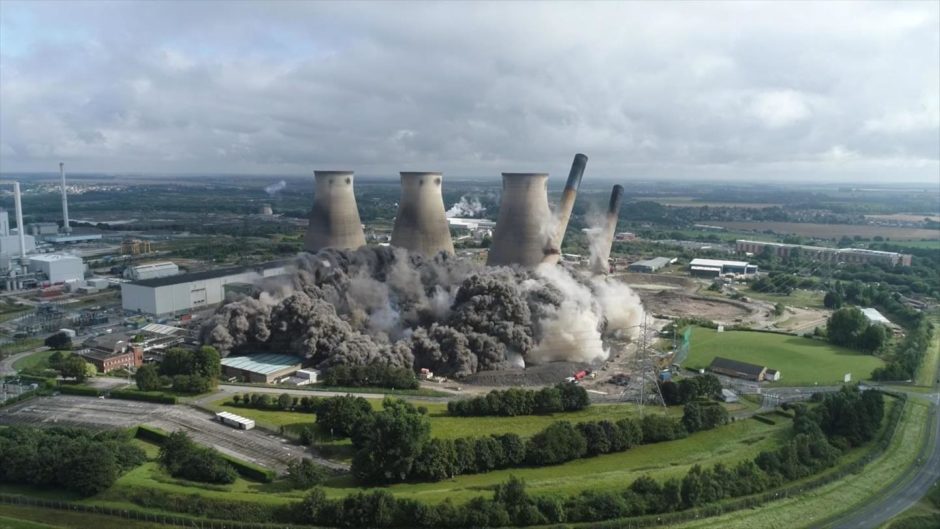
The demolition of the chimney stacks at SSE’s Ferrybridge power station on 21 August was a powerful symbol of the progress the UK has made in weaning itself off emitting carbon dioxide. Less than a decade ago, more than 40% of the UK’s electricity was produced from coal-fired power stations like Ferrybridge. Today the figure is more like 2%. And the UK government is committed to getting rid of the last vestiges of coal by 2025.
The shift away from coal has been rapid and deep, but in some ways invisible, entailing little or no change in the way in which electricity is delivered to households and businesses. When we switch on our televisions or kettles, we can’t tell whether the electrons providing that energy come from coal, renewable energy from onshore and offshore wind farms, nuclear power stations or from natural gas-powered stations.
It would be naïve to think that all the big changes in the UK energy system needed to achieve Net Zero will be as imperceptible as the phasing out of coal. Some of the things we have to do in the years ahead will require a fundamental – and very visible – re-design of the ways we consume energy.
We will need to rethink industrial processes. We will need to think carefully about the balance of energy supply flexibility (and hence energy security) and cost. And lowest cost decarbonisation with cheap but less flexible renewable supply will require changes to the demand side. Our homes and cities will need to be adapted for this low carbon future.
This is why the publication of the UK’s Hydrogen Strategy was so important. Hydrogen can fulfil many of the functions of traditional fossil fuels and balance the overall energy system by providing back up, but crucially without the associated carbon dioxide emissions.
By switching to hydrogen, we can first decarbonise economic activity that otherwise could be very difficult: energy-intensive industry; flexible power generation (for those overcast, windless days and nights); heavy-duty transport such as HGVs and ships; agriculture and then – potentially – heating and cooking in homes that have traditionally relied on natural gas.
At least two of those technologies are ready for commercial roll-out today: so-called “blue” hydrogen, in which natural gas is “reformed” with the carbon dioxide captured and safely stored deep under the North Sea; and “green” hydrogen produced from renewable electricity using electrolysis. Both have a role to play in our net zero future. Their roles will happen at different scale and pace driven by customer choice and policies, and technological progress.
One of the most important aspects of the UK Hydrogen Strategy is that is takes a “colour-blind” approach: favouring neither blue nor green hydrogen, recognising that the UK is going to need large quantities of both and fast to meet its climate targets, while ensuring that any hydrogen used meets a stringent standard to qualify for the label “low carbon”.
The government has also indicated that it is minded to support hydrogen production using a similar mechanism to the system used for the procurement of renewable energy generation. That approach has ensured value for money for the UK taxpayer as the renewable industry has grown over the last
decade. While more complicated than for renewable energy (there is no current hydrogen market as there is for electricity) there is no reason to doubt that a similar approach will be equally as cost-effective, drive innovation and cost reduction when applied to hydrogen production.
Because of these points, the publication of the strategy has received a warm welcome from industry, both from companies developing hydrogen production projects and from their potential future customers. It is still early days but the UK is now far ahead of any other country in its plans for a Hydrogen economy. A huge amount of work has gone into achieving this position and government should be applauded for it.
The next step will be to rapidly work out how to develop the infrastructure which will enable the roll-out of the hydrogen economy. This will include a network of pipelines, starting in industrial clusters like the Humber, as well as underground storage options to help manage significant variations in supply and demand and to ensure hydrogen production is as efficient as possible. There is also an attractive potential for UK exported hydrogen as demand grows in Europe and globally.
The new strategy makes a start on thinking about these important infrastructure challenges. But this work now needs to be accelerated if the UK is going to make the most of the opportunities hydrogen can bring. We also need to start engaging with the wider public on the costs of this transition. I believe that the UK public will accept the costs of decarbonisation compared to the environmental costs of not doing so. What they will not accept is if it is done in a way where such cost is not transparent or justly spread across society and business, or where it is not done for the lowest cost possible.
Recommended for you
